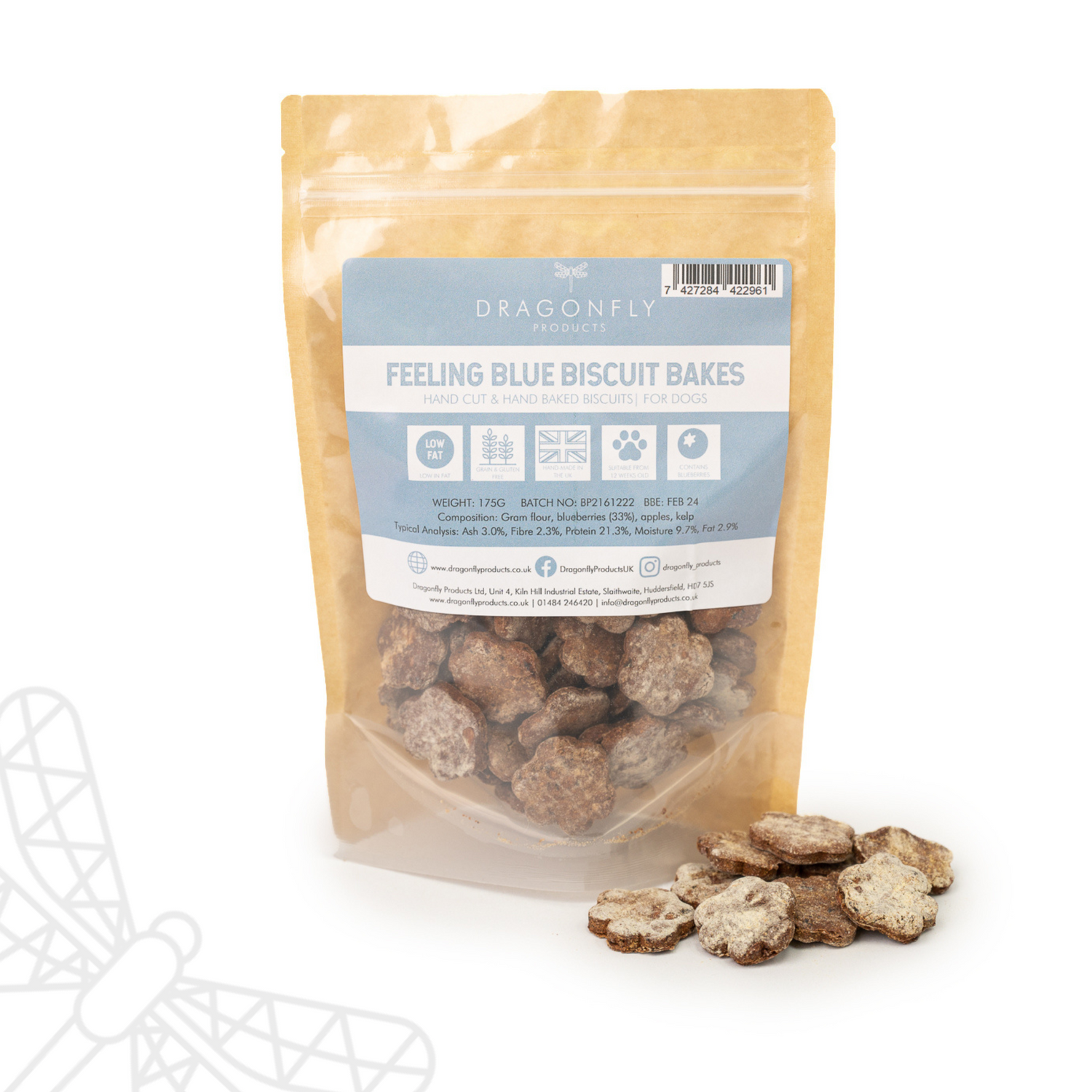
Why do dogs scratch the carpet?
Dog scratching behaviour, particularly when directed towards carpets, can be a source of frustration and concern for owners. Whether it's a playful habit, a territorial display, or a symptom of an underlying issue, understanding the reasons behind this behaviour is essential for effective management.
In this comprehensive guide, we delve into the various factors that may contribute to dogs scratching the carpet, ranging from natural instincts and territorial marking to boredom, anxiety, and medical conditions. By gaining insight into the motivations behind this behaviour, pet owners can better address it with appropriate strategies and interventions.
Table of Contents
- What are the most common reasons for dogs to scratch carpets?
- How can I stop my dog scratching the carpet?
- Is carpet scratching harmful to my dog?
- Should I punish my dog for scratching the carpet?
- Is it normal for puppies to scratch the carpet?
- Can certain dog breeds be more prone to carpet scratching?
What are the most common reasons for dogs to scratch carpets?
There are six main reasons that dogs scratch the carpet. Not all dogs will exhibit this behaviour but if they do, these are the most common causes.
1. Natural Instinct
The natural instincts of dogs to dig and scratch have deep roots in their evolutionary history. Dogs, as descendants of wolves, inherited behaviours that were essential for survival in the wild. Understanding the evolutionary basis of this behaviour sheds light on why dogs still exhibit it today, even in domestic settings.
- Digging for Shelter and Comfort: In the wild, dogs and their ancestors would dig to create shelters and nests. This behaviour served multiple purposes, including protection from the elements, insulation against extreme temperatures, and providing a sense of security. By digging into the earth, dogs could create comfortable resting spots that were safe and conducive to relaxation. Even though domestic dogs may not need to dig for shelter in the same way as their wild counterparts, the instinct to create a comfortable resting area is deeply ingrained.
- Burying Food for Later Consumption: Another ancestral behaviour that contributes to dogs' inclination to dig is the instinct to bury food for future consumption. In the wild, wolves and other canids often bury surplus food as a way to store it for leaner times or to hide it from other animals. This behaviour is driven by both practical and instinctual motivations. Dogs may still exhibit this behaviour, even if they have a steady food supply, as it is a deeply ingrained instinct passed down through generations.
- Exploration and Investigation: Digging and scratching also serve as means of exploration and investigation for dogs. In the wild, dogs would dig to uncover hidden treasures such as prey, edible roots, or other items of interest. This behaviour allowed them to gather information about their environment and locate valuable resources. Even in a domestic setting, dogs may engage in digging and scratching as a way to satisfy their innate curiosity and explore their surroundings.
- Physical and Mental Stimulation: Digging and scratching provide dogs with physical and mental stimulation, which is essential for their overall well-being. These activities engage their senses, provide a form of exercise, and offer mental enrichment. Dogs may scratch the carpet or other surfaces as a way to engage in natural behaviours that fulfil their need for stimulation and activity.
2. Territorial Marking
Dogs have scent glands in their paws, and scratching the carpet can be a way for them to mark their territory. The scratching leaves behind their scent, which helps them establish ownership over that particular area. Territorial marking is a common behaviour among dogs, rooted in their instinctual need to establish and maintain their territory.
- Scent Communication: Dogs have scent glands located in various parts of their bodies, including their paw pads. When they scratch at the carpet or other surfaces, they leave behind scent markers from these glands. These markers contain pheromones and other chemical signals unique to each dog, which convey information to other animals in the vicinity.
- Establishing Ownership: By scratching at the carpet, dogs are essentially leaving their "scent signature" in that particular area. This serves as a way for them to assert ownership over the space and communicate to other dogs that this territory belongs to them. In the wild, establishing territory is crucial for survival, as it provides access to resources such as food, water, and shelter. While domestic dogs may not face the same survival pressures, the instinct to mark territory remains strong.
- Social Signalling: Territorial marking through scratching can also be a form of social signalling among dogs. In multi-dog households or in environments where dogs interact with other animals, such as dog parks, marking territory can convey social status and hierarchy. Higher-ranking dogs may engage in more frequent and conspicuous marking behaviours to assert their dominance over lower-ranking individuals.
- Response to Changes or Stressors: Dogs may increase their marking behaviour in response to changes in their environment or in situations where they feel stressed or threatened. This could include changes in routine, the presence of unfamiliar people or animals, or disruptions to their living space. In such cases, marking territory through scratching can serve as a way for dogs to reaffirm their sense of security and control over their surroundings.
- Reproductive Signalling: Territorial marking also plays a role in reproductive behaviour among dogs. During mating season, both male and female dogs may engage in increased marking behaviour to advertise their availability and attract potential mates. This can include scratching at the ground or other surfaces to release pheromones that signal reproductive readiness.
3. Boredom or Lack of Stimulation
Dogs may scratch the carpet out of boredom or frustration, especially if they're not getting enough mental or physical stimulation. This behaviour can be a way for them to release pent-up energy or alleviate boredom.
- Natural Energy Levels: Dogs are inherently active animals with varying energy levels depending on their breed, age, and individual temperament. Some breeds, such as Border Collies and Jack Russell Terriers, are known for their high energy levels and need for stimulation. When dogs don't receive adequate mental and physical exercise to channel their energy, they may resort to behaviours like scratching the carpet as a way to release pent-up energy.
- Cognitive Stimulation: Dogs also require mental stimulation to keep their minds engaged and prevent boredom. Without sufficient mental stimulation, dogs can become restless and seek out activities to occupy themselves. Scratching the carpet may serve as a form of self-entertainment for dogs, providing them with a brief distraction from their boredom.
- Environmental Enrichment: Dogs thrive in environments that provide opportunities for exploration, problem-solving, and sensory stimulation. When their environment lacks variety or novelty, dogs may resort to repetitive behaviours like scratching the carpet as a way to alleviate boredom. Introducing new toys, puzzle feeders, or engaging in interactive play sessions can help provide the mental enrichment dogs need to stay mentally stimulated and prevent boredom-induced behaviours.
- Lack of Physical Exercise: Adequate physical exercise is essential for maintaining a dog's physical health and mental well-being. Dogs that don't receive enough physical activity may exhibit restless or hyperactive behaviour, including excessive scratching. Regular walks, playtime, and opportunities for off-leash exercise can help fulfil a dog's need for physical activity and reduce the likelihood of boredom-related behaviours.
4. Anxiety or Stress
Dogs may engage in carpet scratching as a coping mechanism for anxiety or stress. Similar to humans biting their nails or tapping their feet when nervous, dogs may scratch the carpet as a way to self-soothe and alleviate their anxiety.
Anxiety or stress can manifest in various ways in dogs, and carpet scratching can be one of the behaviours exhibited in response to these emotions.
- Underlying Triggers: Dogs can experience anxiety or stress due to a variety of factors, including changes in their environment, loud noises (such as thunderstorms or fireworks), separation from their owners, visits to the veterinarian, or encounters with unfamiliar people or animals. These triggers can evoke feelings of fear, uncertainty, or discomfort in dogs, leading them to seek out coping mechanisms to alleviate their anxiety.
- Self-Soothing Behaviour: Just like humans engage in self-soothing behaviours like nail-biting or pacing when feeling anxious, dogs may scratch the carpet as a way to self-soothe and alleviate their stress. The repetitive motion of scratching can provide dogs with a sense of comfort and control in situations where they feel anxious or overwhelmed. It may also serve as a distraction from the source of their anxiety.
- Redirected Anxiety: In some cases, dogs may redirect their anxiety or stress into behaviours like scratching the carpet. For example, a dog that feels anxious due to separation from their owner may engage in destructive behaviours like carpet scratching as a way to cope with their distress. This redirected behaviour allows them to channel their emotions into a tangible action, albeit a destructive one.
- Pheromone Release: Like territorial marking, scratching the carpet can also serve as a means for dogs to release pheromones that help regulate their emotions. Certain glands in a dog's paw pads produce pheromones that can have calming effects on them. By scratching the carpet, dogs may be instinctively trying to release these calming pheromones to soothe their anxiety.
- Environmental Modification: In environments where dogs feel stressed or anxious, they may engage in behaviours like carpet scratching as a way to modify their surroundings to make them feel more comfortable. By altering their environment through scratching, dogs may be attempting to create a sense of security or familiarity in an otherwise stressful situation.
5. Attention-Seeking Behaviour
Some dogs may scratch the carpet as a way to garner attention from their owners. If they've learned that this behaviour results in a reaction from their humans, whether positive or negative, they may continue to do it as a means of getting attention.
- Desire for Interaction: Dogs are social animals that thrive on human companionship and interaction. When they feel lonely or neglected, they may resort to attention-seeking behaviours as a way to engage with their owners and fulfil their need for social interaction and companionship.
- Reinforcement History: Dogs learn through association and reinforcement. If a dog scratches the carpet and receives attention from their owner in response, whether it's in the form of verbal reprimands, physical interaction, or even just eye contact, they may learn to associate carpet scratching with getting attention. Over time, this can reinforce the behaviour and lead to its repetition.
- Negative Attention vs. Positive Attention: It's important to note that attention-seeking behaviour doesn't necessarily discriminate between positive and negative attention. While some dogs may seek attention through desirable behaviours like sitting or offering a toy, others may resort to less desirable behaviours like carpet scratching if they perceive it as a way to get their owner's attention, even if that attention is negative.
- Inconsistency in Training: Inconsistent responses from owners to attention-seeking behaviours can inadvertently reinforce them. For example, if a dog scratches the carpet and sometimes receives attention while other times is ignored or reprimanded, they may continue to engage in the behaviour in hopes of getting attention. Consistency in training and responses to behaviour is key to effectively addressing attention-seeking behaviours.
6. Medical Issues
In some cases, excessive carpet scratching could be a sign of underlying medical issues such as allergies, skin irritation, parasites, or even pain. Dogs may scratch to relieve itching or discomfort caused by these conditions.
- Allergies: Dogs can develop allergies to various environmental allergens such as pollen, dust mites, mould, or certain ingredients in their food. Allergic reactions can manifest as skin irritation, itching, and scratching. Dogs may scratch at their skin, including areas with carpet, in an attempt to alleviate the itching caused by allergies.
- Skin Irritation: Skin irritation can result from a variety of factors, including contact with irritants or chemicals, fungal or bacterial infections, or underlying skin conditions such as dermatitis. Irritated skin can be itchy and uncomfortable for dogs, prompting them to scratch at affected areas, including carpeted surfaces, to relieve the discomfort.
- Parasites: External parasites such as fleas, ticks, and mites can infest a dog's skin and fur, leading to intense itching and scratching. Dogs may scratch at their skin, including areas with carpet, in an attempt to dislodge the parasites or alleviate the itching caused by their bites. Presence of parasites or their faeces on the carpet can also trigger scratching behaviour.
- Pain: Dogs may scratch at carpeted surfaces if they are experiencing pain or discomfort, particularly in their paws, legs, or joints. Underlying conditions such as arthritis, injuries, or orthopaedic issues can cause pain that prompts dogs to engage in behaviours like scratching as a way to relieve or distract themselves from the discomfort.
- Ear Infections: Ear infections are common in dogs and can cause discomfort and itchiness in the ears. Dogs may scratch at their ears and around their head, which can sometimes result in them rubbing their head and ears against carpeted surfaces. This behaviour may indicate the presence of an ear infection or other ear-related issues.
- Other Medical Conditions: Various other medical conditions, such as hormonal imbalances, autoimmune disorders, or neurological issues, can manifest with symptoms that include itching and scratching. It's essential for dog owners to consult with a veterinarian to rule out any underlying medical issues contributing to their dog's scratching behaviour.
How can I stop my dog scratching the carpet?
Stopping your dog from scratching the carpet requires a combination of strategies aimed at addressing the underlying cause of the behaviour and providing alternative outlets for their natural instincts.
Identify the Underlying Cause: First, try to determine why your dog is scratching the carpet. Consider factors such as boredom, lack of stimulation, anxiety, medical issues, or attention-seeking behaviour. Observing your dog's behaviour and consulting with a veterinarian or a certified animal behaviourist can help identify the root cause.
Provide Adequate Exercise and Mental Stimulation: Ensure that your dog receives sufficient physical exercise and mental stimulation to prevent boredom and excess energy. Engage in regular walks, play sessions, and training activities to keep your dog physically and mentally stimulated.
Redirect the Behaviour: Whenever you catch your dog scratching the carpet, redirect their attention to an appropriate alternative behaviour or activity. Offer them a toy, puzzle feeder or a long lasting chew to engage their mind and provide an outlet for their natural instincts.
Create a Designated Scratching Area: Provide your dog with a designated scratching area, such as a scratching post or mat, where they are encouraged to scratch. Place the scratching post near the area where they usually scratch the carpet and encourage them to use it by praising and rewarding them when they do with high value natural treats.
Use Deterrents: Consider using deterrents to discourage your dog from scratching the carpet. Sprays with bitter or unpleasant tastes can be applied to the carpet to deter your dog from scratching. You can also use double-sided tape or plastic carpet runners with the nubs facing up to make the carpet uncomfortable for scratching.
Address Anxiety or Stress: If your dog's scratching behaviour is due to anxiety or stress, work on addressing the underlying cause through behaviour modification techniques, environmental modifications, and, if necessary, consultation with a veterinarian or animal behaviourist for additional support. Using a natural supplement for anxiety can also alleviate the desire to scratch as your dog feels calmer.
Provide Regular Grooming: Keep your dog's nails trimmed to reduce their ability to scratch effectively. Regular grooming can also help prevent skin irritation and discomfort that may contribute to scratching behaviour.
Seek Professional Help if Needed: If your dog's scratching behaviour persists despite your efforts to address it, consider seeking help from a professional, such as a veterinarian or certified animal behaviourist. They can provide tailored advice and guidance based on your dog's specific needs and circumstances.
Consistency, patience, and positive reinforcement are key when working to stop your dog from scratching the carpet. By addressing the underlying cause, providing appropriate outlets for their natural behaviours, and using positive training methods, you can help your dog develop alternative, more desirable behaviours.
Is carpet scratching harmful to my dog?
While occasional scratching may not be harmful, excessive or compulsive scratching could lead to skin irritation or injury. Additionally, ingesting carpet fibres or debris from the carpet may pose a risk of intestinal blockages. Addressing the behaviour is important to prevent potential harm to your dog.
Should I punish my dog for scratching the carpet?
Punishment is not recommended as it can worsen anxiety or fear-related behaviours and damage the bond between you and your dog. Instead, focus on positive reinforcement techniques to encourage desirable behaviours and redirect your dog's attention away from carpet scratching.
Is it normal for puppies to scratch the carpet?
Yes, puppies may scratch the carpet as they explore their environment and exhibit natural behaviours such as digging and exploring. Providing appropriate outlets for their energy such as chews and stimulating toys whilst providing training and guidance can help redirect this behaviour as they mature.
Can certain dog breeds be more prone to carpet scratching?
Some dog breeds may have a higher propensity for digging or scratching behaviours due to their instincts or energy levels. Breeds with terrier ancestry, for example, may be more inclined to engage in digging behaviours. However, individual temperament and upbringing also play significant roles.
So there you have my roundup of why dogs scratch the carpet and what you can do to help break the cycle of this unwanted behaviour.
For any further help and advice please contact us on 01484 246420 and why not join our social media channels and online community on Instagram, Facebook or YouTube.
With Wags and Woofs,
Laura, Dolly & Reggie


